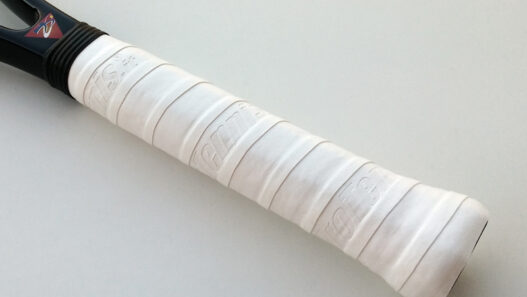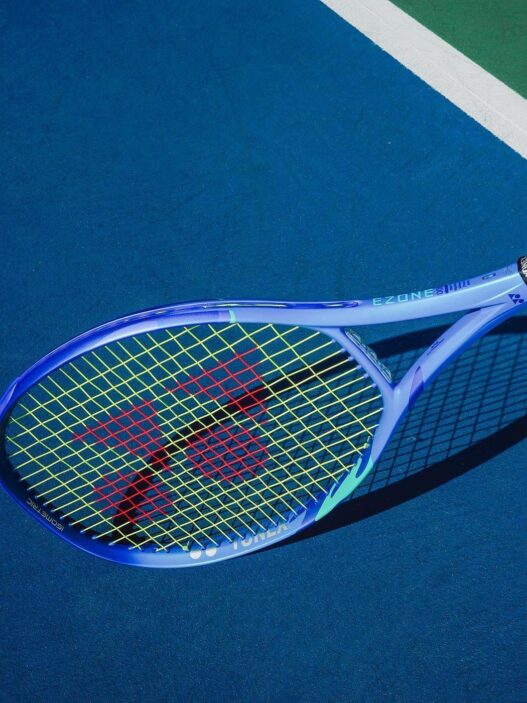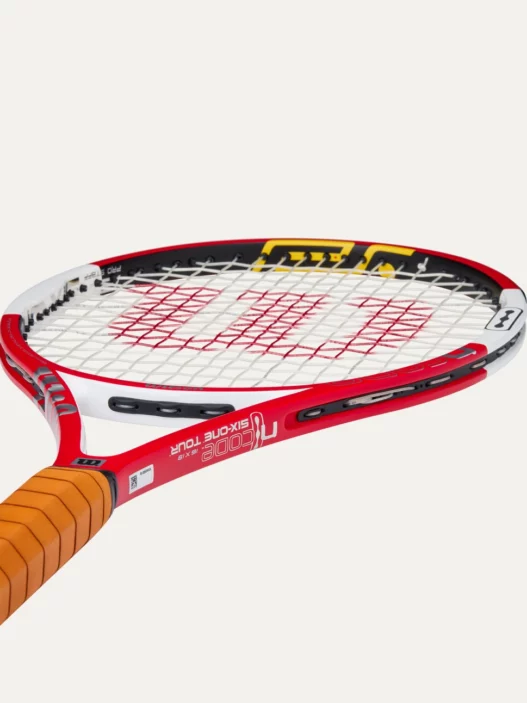There’s a moment in every tennis player’s life when they wonder if their racket could be doing just a little more. Maybe you’re looking for more power on your serve, more stability on your backhand, or just that solid, satisfying “thud” when the ball hits the strings.
Adding weight to your racket is one of the simplest ways to improve how it feels and performs. It’s something pros do all the time, and you don’t need to be a gear nerd to give it a try.
Here’s a full guide to help you do it the right way.
Why Add Weight at All?
Most rackets off the shelf are designed to work for the average player. They’re light enough to swing quickly, stable enough to get the job done, and safe for most people’s arms.
But let’s be honest. Once you’ve played a while, your needs get a little more specific.
Adding weight can help you:
- Make your racket feel more stable at impact
- Hit heavier, deeper balls without swinging harder
- Reduce vibrations and improve the overall feel
- Control your swing speed with more natural rhythm
- Customize the balance to match your playing style
In short, a bit of lead tape can take a good racket and make it feel like it was built just for you.
What Happens When You Add Weight?
The effect depends on where you put it. And that’s the fun part. There’s no single “right” answer. You’re free to experiment and find what feels best for your game.
Let’s break it down by location.
1. Top of the Frame (12 o’clock)
Adding weight at the top increases swingweight. That means your racket will feel heavier as it moves, but you’ll get more plow-through, more depth, and better serve pop. You’ll also find more forgiveness on off-center hits.
This is a great spot for baseline players or anyone looking to hit heavier shots.
2. Sides of the Frame (3 and 9 o’clock)
This is where you add weight if you want to make your racket more stable without making it feel too sluggish. It reduces twisting on off-center shots and helps with volleys and blocking hard balls.
Perfect for doubles players or those who want a bit more control.
3. Bottom of the Head (6 o’clock)
This area gives you a little extra stability without increasing swingweight too much. It’s not as common as 12, 3, or 9, but it can balance out other adjustments nicely.
Think of it as a subtle upgrade to how your racket feels on low balls or slices.
4. Inside the Handle (under the grip)
This is where you go when you want more mass but don’t want to slow your swing down. Adding weight here makes the racket more head-light. It feels faster in your hand, but you still get that satisfying mass behind the ball.
This is especially helpful if you’ve added weight to the head and want to keep the balance in check.
What You’ll Need
To keep it simple, here’s what you need to get started:
- Lead tape or tungsten tape (¼ inch wide is standard)
- Scissors
- A small scale (optional but helpful)
- Overgrip (for handle adjustments)
- Patience and curiosity
That’s it. No fancy tools or stringing machines required.
How to Add Weight: Step by Step
Step 1: Start Small
Cut small strips of lead tape, about 2 to 4 grams total. Even a little can make a difference. You can always add more later, but it’s much harder to go back if you add too much too soon.
Step 2: Place the Tape
Pick your spot (see above). For example, if you’re adding at 3 and 9 o’clock, place equal strips on both sides of the frame. Keep them symmetrical so the racket stays balanced.
If you’re adding to the handle, you can put a few grams under the grip or use putty or silicone if you want a cleaner feel.
Step 3: Secure It
Use a little electrical tape or your overgrip to make sure everything stays in place. You don’t want tape peeling off mid-match.
Step 4: Hit With It
This is the most important part. Play with it. Take it to practice. Hit groundstrokes, serves, volleys. Pay attention to how it feels, not just how it performs.
Is the racket doing more of the work for you? Does it feel sluggish or more solid? Are you more confident on your shots?
Step 5: Adjust if Needed
Feel free to move the tape around. You’re not locked in. A few millimeters here or there can change the feel completely. You might even want to keep a notebook with notes on what you liked and didn’t like.
That’s what most experienced players do.
Tips from the Stringing Room
Here’s something Lucas, one of our in-house racket specialists, always says:
“People think adding weight is about power. It’s really about connection. You want the racket to feel like an extension of your hand.”
He’s right. This isn’t about swinging harder. It’s about creating a frame that feels natural, solid, and tuned to your rhythm.
A Simple Setup to Try
If you’re new to this, here’s a basic mod to start with:
- 2 grams at 12 o’clock
- 2 grams at 6 o’clock
- 2 grams under the grip
That’s 6 grams total, evenly balanced. It won’t shock your system but will give you just enough to feel a difference.
Final Thoughts
Adding weight to your racket is one of the easiest and cheapest upgrades you can make. You don’t need to be a pro or a gear nerd. You just need a bit of tape, some time on court, and a sense of what you want your racket to do.
Play with it. Trust your hands. And if you’re not sure where to start, come visit us. We love helping players figure out what works best for their game.
If you try it and it works, let us know. We’d love to hear how your setup evolves. And if it doesn’t work, that’s fine too. The beauty of tennis is that every tweak teaches you something new.























